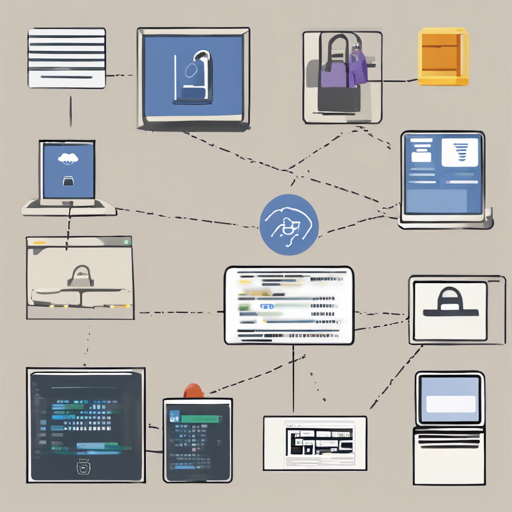jCasbin is a powerful tool for managing access control in Java applications. This article will guide you through understanding what jCasbin is, how it functions, and how to implement it in your projects. Let’s get started!
What is jCasbin?
jCasbin is an open-source access control library that supports various access control models, such as ACL (Access Control List), RBAC (Role-Based Access Control), and ABAC (Attribute-Based Access Control). It allows developers to enforce authorization policies effectively and securely in their applications.
How Does jCasbin Work?
Think of jCasbin as a gatekeeper for your application. Just like a bouncer at a nightclub would check ID and ensure guests are on the list before allowing them entry, jCasbin checks user permissions against defined policies before allowing access to resources. Here’s how jCasbin simplifies the process:
- **Configuration Driven**: The access control model is defined in a configuration (CONF) file, making it easy to switch between different policies by just modifying this file.
- **Customizable Models**: You can combine different access control models to suit your requirements, such as combining RBAC roles with ABAC attributes within a single model.
Installation Steps
To integrate jCasbin into your Maven project, add the following dependency to your pom.xml file:
<dependency>
<groupId>org.casbin</groupId>
<artifactId>jcasbin</artifactId>
<version>1.x.y</version>
</dependency>Getting Started with jCasbin
Follow these steps to set up and enforce access control using jCasbin:
- Create an Enforcer: Initialize a new jCasbin enforcer with your model and policy files.
- Enforce Access Control: Before performing any action, check if the user has permission:
- Manage Permissions: Use the jCasbin API to manage user permissions dynamically.
Enforcer enforcer = new Enforcer("pathtomodel.conf", "pathtopolicy.csv");String sub = "alice"; // User
String obj = "data1"; // Resource
String act = "read"; // Action
if (enforcer.enforce(sub, obj, act)) {
// permit access
} else {
// deny access
}Policy Management
jCasbin provides management APIs for handling permissions easily. You can define new policies or modify existing ones dynamically. Check the [Management API](https://github.com/casbin/jcasbin/blob/master/src/main/java/org/casbin/jcasbin/main/ManagementEnforcer.java) for more details.
Troubleshooting
If you encounter issues while implementing jCasbin, consider the following troubleshooting ideas:
- Ensure your model and policy files are correctly defined without syntax errors.
- Double-check user IDs in the policy file for accuracy.
- Consult the [jCasbin documentation](https://casbin.org/docs/overview) for examples and explanations.
For more insights, updates, or to collaborate on AI development projects, stay connected with fxis.ai.
At the End of the Day…
By leveraging jCasbin in your Java projects, you can ensure secure and manageable access control with ease. As a handy library that integrates well with various models of access control, it’s a suitable solution for modern applications.
At fxis.ai, we believe that such advancements are crucial for the future of AI, as they enable more comprehensive and effective solutions. Our team is continually exploring new methodologies to push the envelope in artificial intelligence, ensuring that our clients benefit from the latest technological innovations.
Conclusion
Ready to enforce secure permissions in your application? Start with jCasbin today, and take charge of your access control management.

